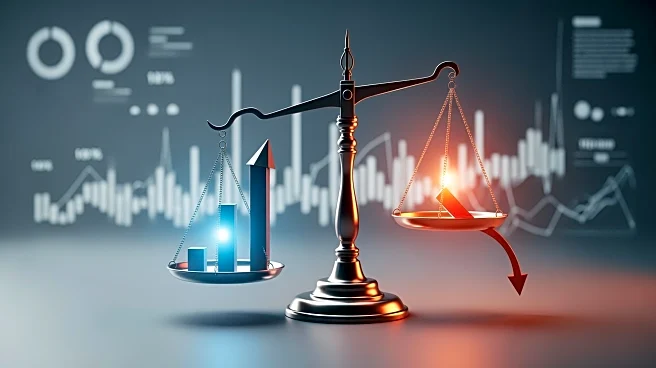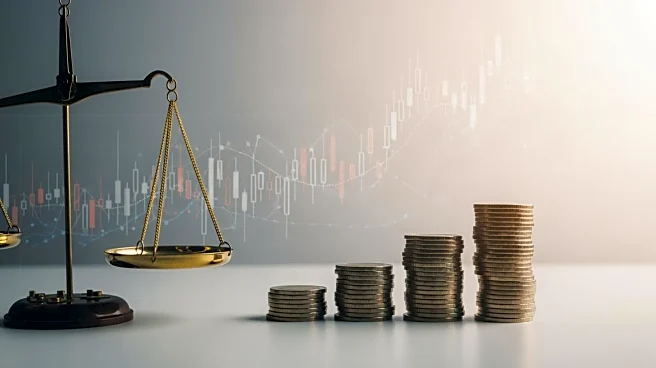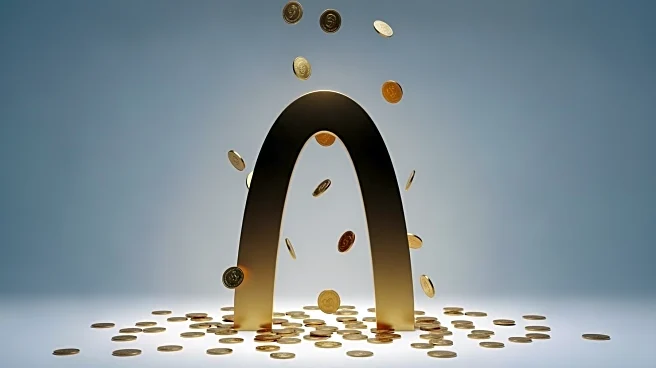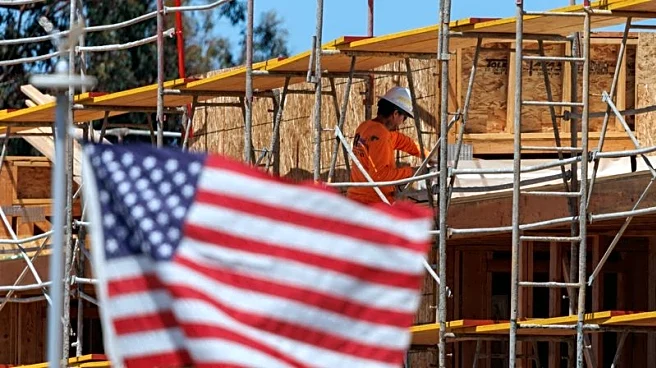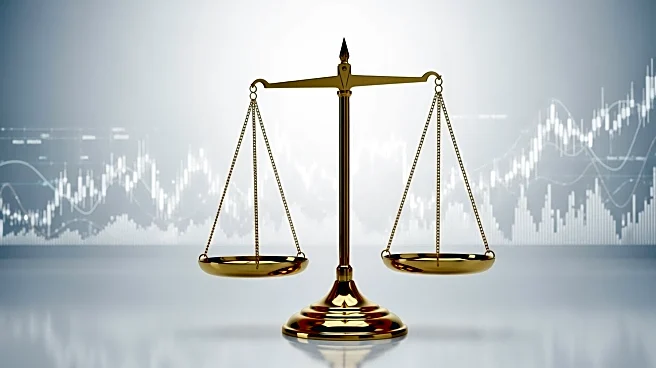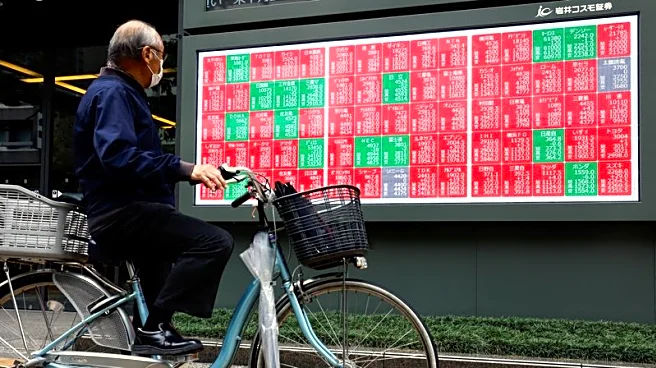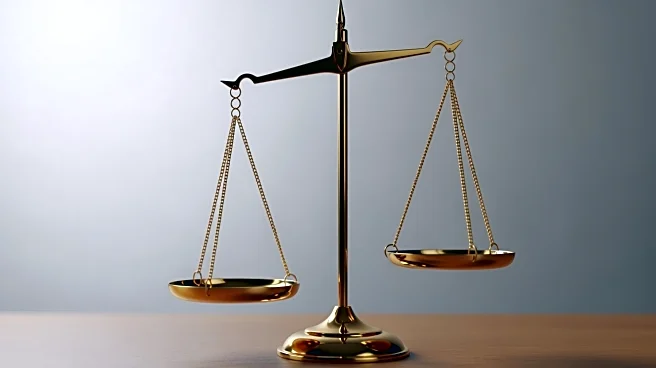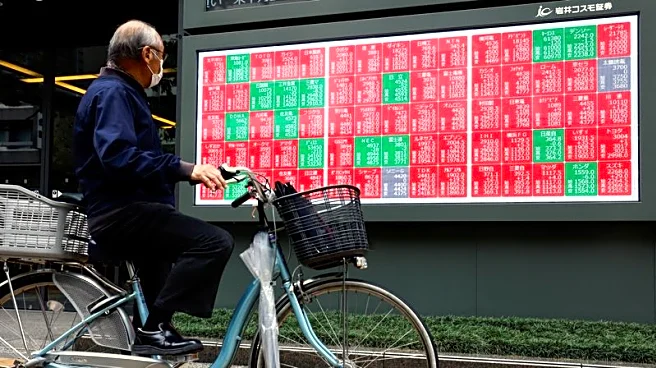What's Happening?
The U.S. economy is currently described as 'K-shaped,' indicating a divergence in economic fortunes between wealthier and lower-income Americans. According to the Bank of America Institute, wage growth
for higher-income households rose to 4% year-over-year in September, while lower-income households saw a decline to 0.9% in August, the lowest since 2016. This disparity is reflected in consumer spending patterns, with the top 10% of income earners accounting for nearly half of all spending. The luxury fashion sector saw an 8% increase in spending year-over-year in October, driven by wealthier consumers. Meanwhile, lower-income households face challenges such as inflation, credit card debt, and a slowing job market, which are exacerbating the economic divide.
Why It's Important?
The K-shaped economy highlights growing economic inequality in the U.S., with wealthier individuals experiencing stronger wage growth and increased spending power, while lower-income groups struggle with stagnant wages and rising living costs. This economic bifurcation could have significant implications for public policy and social stability, as it underscores the need for targeted interventions to support lower-income households. The disparity in economic conditions may also influence political discourse and policy decisions, particularly in areas related to taxation, social welfare, and labor market reforms.
What's Next?
The ongoing economic divide may prompt policymakers to consider measures aimed at reducing inequality, such as tax reforms or increased social spending. Additionally, businesses may need to adapt their strategies to cater to the differing needs of high-income and low-income consumers. The Federal Reserve's monetary policy decisions could also be influenced by these economic trends, as they balance the need to support growth while managing inflation.
Beyond the Headlines
The K-shaped economy raises ethical questions about the distribution of wealth and resources in society. It may lead to long-term shifts in consumer behavior, as lower-income households prioritize essential spending over discretionary purchases. The trend could also impact cultural dynamics, as economic disparities influence social mobility and access to opportunities.
